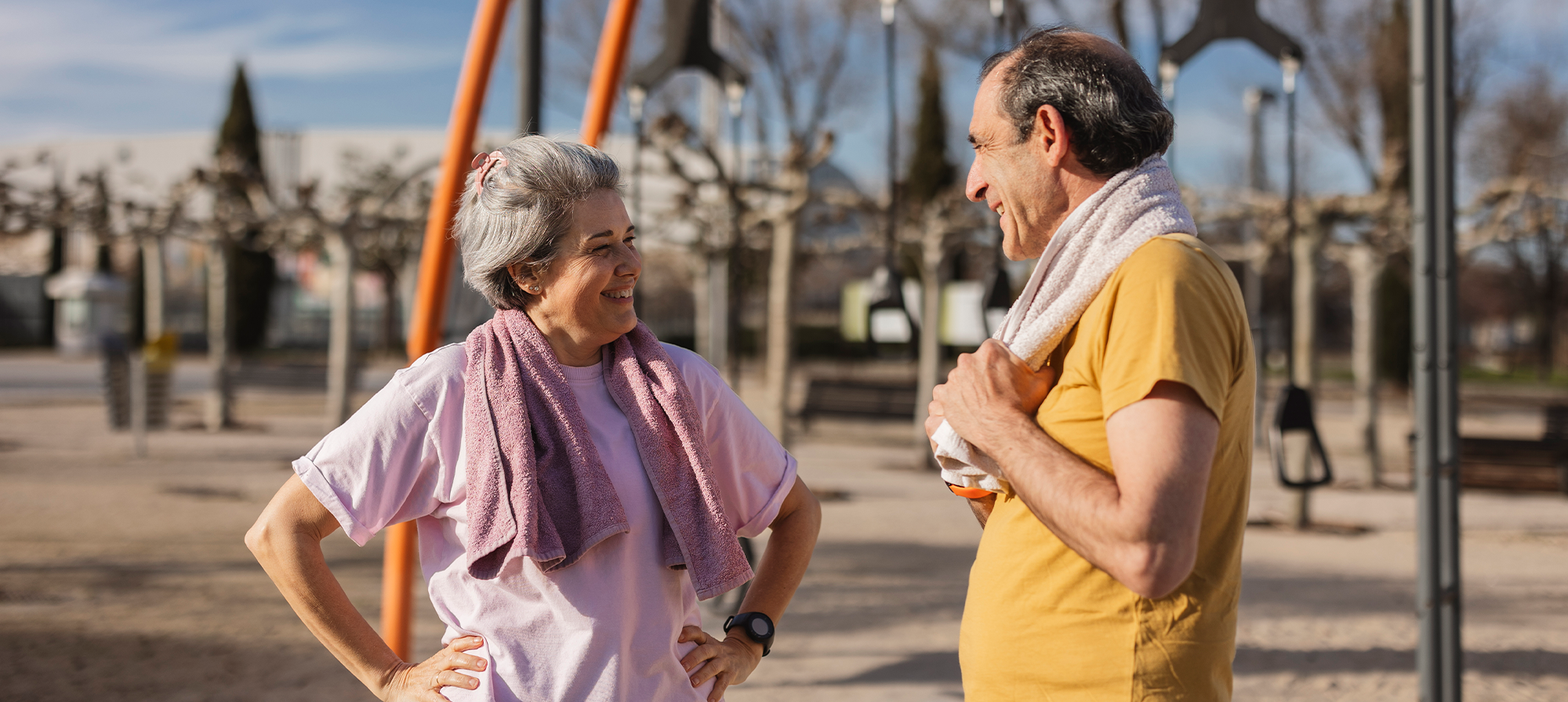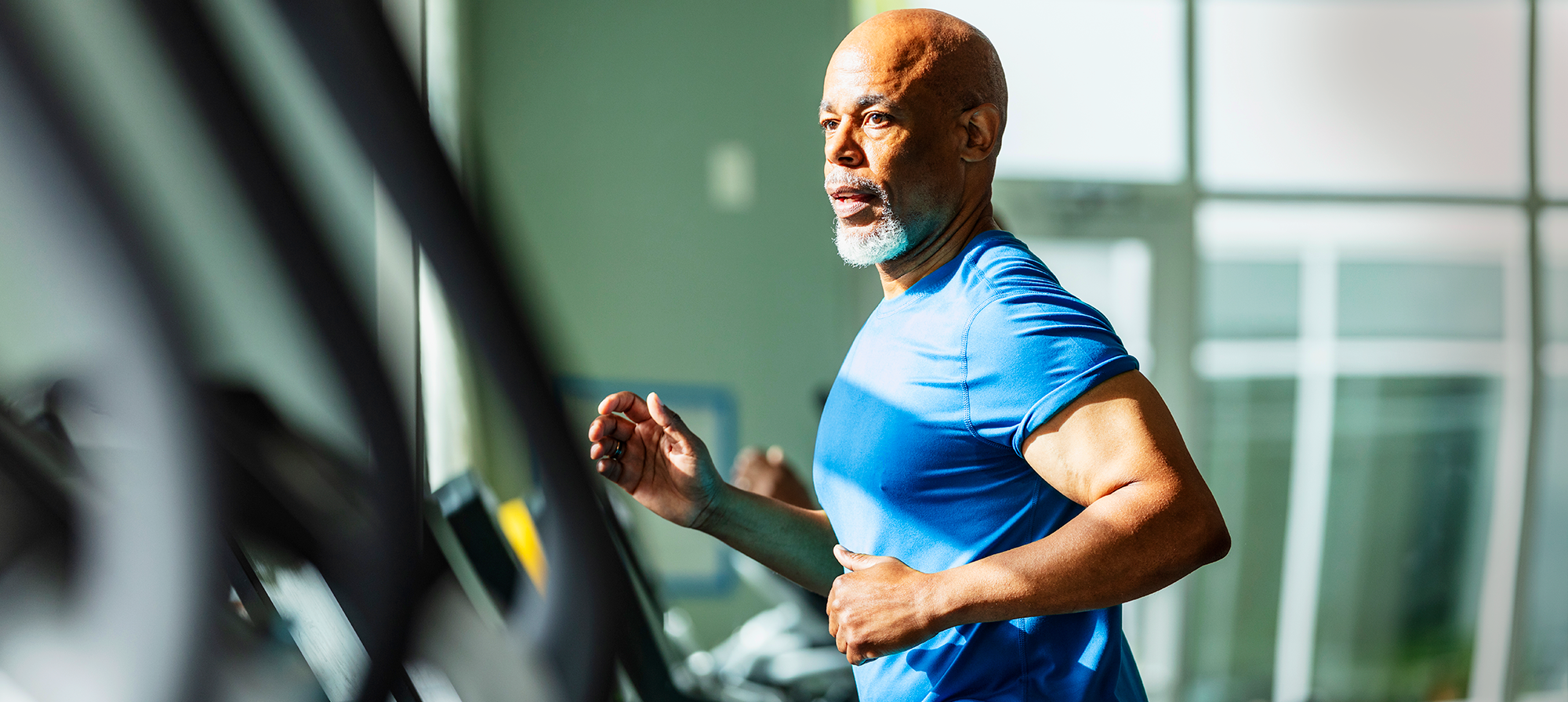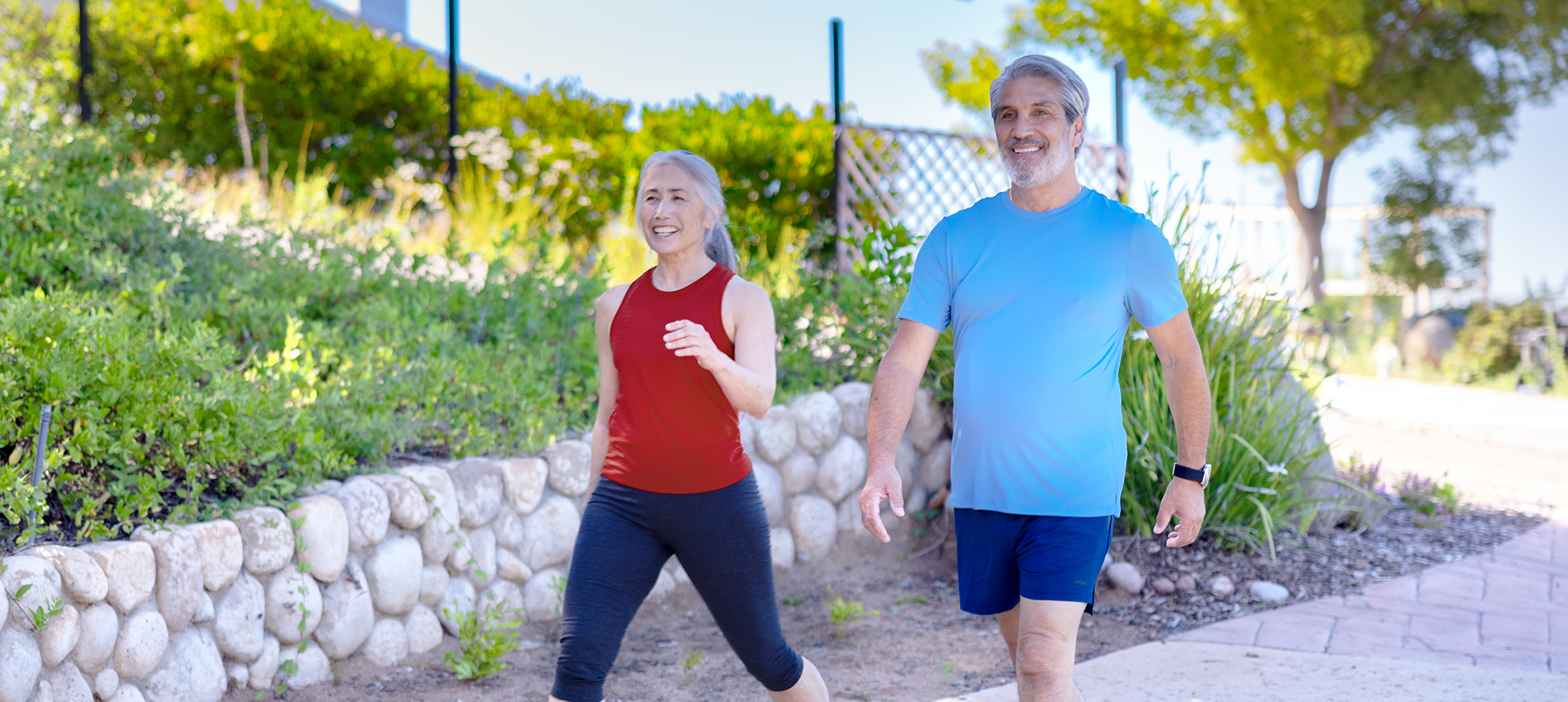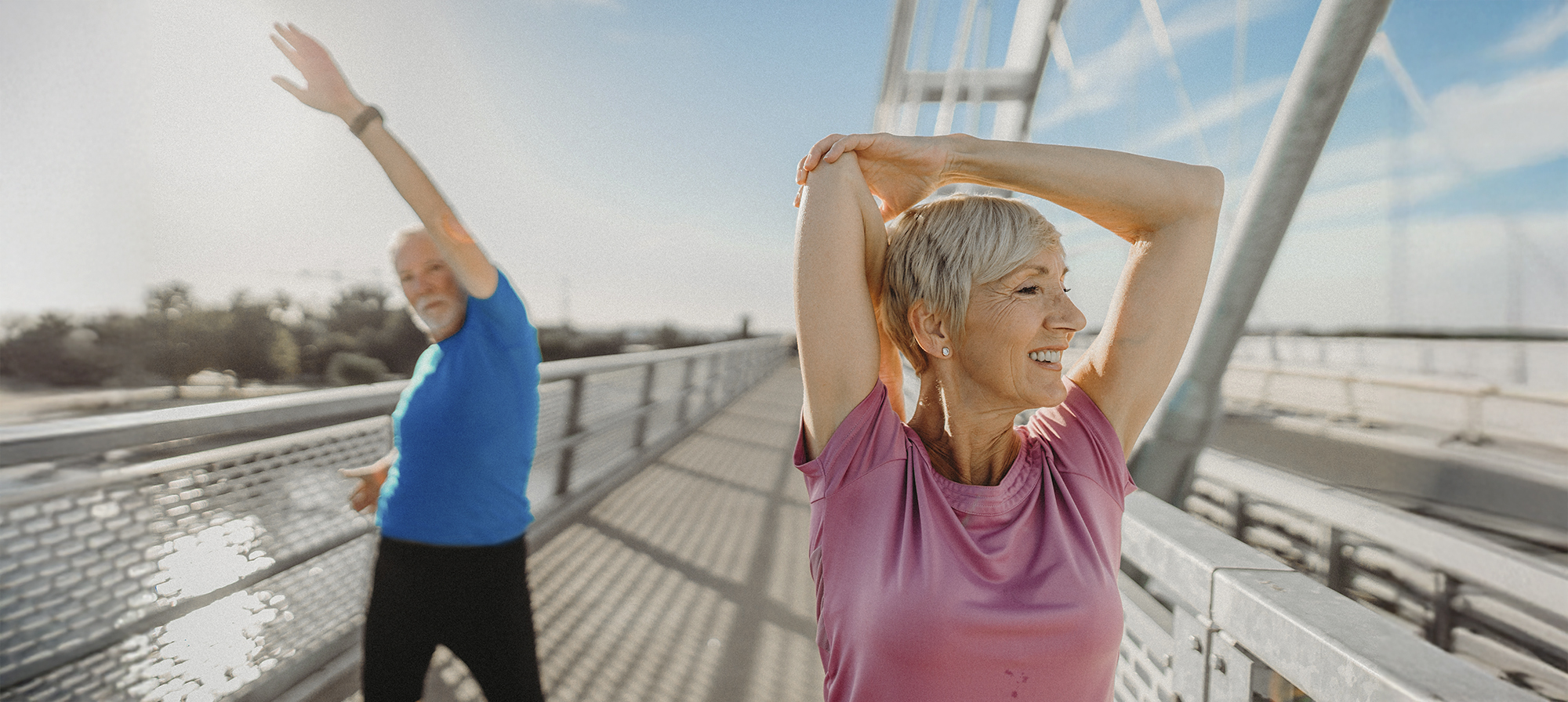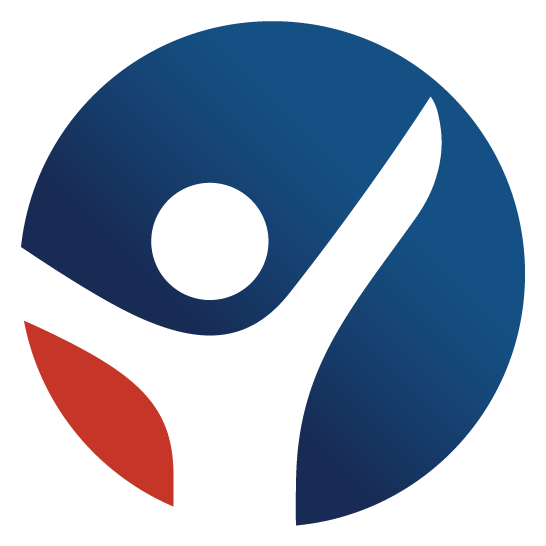It’s hard to change a lot of health habits at once. So, try starting with exercise. Establishing a fitness routine first may make other habit changes easier.
Overhauling your entire lifestyle often means changing not just one habit, but many. Maybe you’re trying to eat a healthier diet and quit smoking at the same time. Perhaps you’re trying to enhance your sleep while simultaneously working on a weight loss regimen. Or maybe you’re trying to get a better handle on your stress and cut back on alcohol at the same time.
Trying to change all your unwanted habits at once is by no means impossible. But it can be a tall order—one that might lead to more frustration than success. Changing even one habit takes time, patience, commitment, and work. Behavioral research also suggests that taking small steps toward new health goals, one goal at a time, may help boost your odds of success.
Experts have also found that changing a single habit first can open a gateway to easier habit changes later. Also called a “keystone habit,” this start-with-one-habit approach is based on a theory by author Charles Duhigg. In his book “The Power of Habit,” Duhigg suggests that changing one habit first, especially exercise, can trigger a ripple effect. It’s this ripple effect that gives you the momentum to change other habits with greater ease. Duhigg explains:
“When people start habitually exercising, even as infrequently as once a week, they start changing other, unrelated patterns in their lives, often unknowingly. Typically, people who exercise start eating better and become more productive at work. They smoke less and show more patience with colleagues and family.”
“It’s not clear why. But for many people exercise is a keystone habit that triggers widespread change.”

Exercise is not the only keystone habit—but it’s a helpful one
You can certainly take your pick of which habit you want to change first. Research suggests that adopting pretty much any healthy habit can foster additional habit changes later on. So, if you’re feeling more driven to form healthier eating or sleeping habits first, take that approach. But keep in mind that exercise may be an especially powerful keystone habit.
How exercise helps lead to other habit changes
So, exactly how does exercise help spark other healthy habit changes? Working out on a routine basis comes with a wide range of fairly immediate health perks. And it’s these exercise-related benefits that can spark other habit changes more organically, without you having to think about them or try quite so hard. Here’s a closer look at the helpful trickle-down effects that a regular workout routine can bring:
- A better mood. A large body of research suggests that routine exercise boosts levels of feel-good brain hormones that can lessen stress, enhance your mood, and stave off depression and anxiety.
So, say that you’re trying to change your eating habits and also lose weight. A more stable, positive mood brought on by exercise can help curb emotional eating—you know, those hard-to-resist cravings for junk food that happen when you feel sad, mad, or anxious? Nixing junk food cravings can take you one step closer to eating an overall healthier diet and to losing weight.
Exercise is also a powerful way to ease stress, a known trigger for nicotine cravings. So, if you’re trying to quit smoking, the boost in mood and drop in stress from working out will help you say “no” more easily to nicotine cravings.
Bottom line, an exercise-induced boost in mood can also give you the confidence, positive outlook, and motivation needed to tackle just about any other habit you want to change. - Better sleep. Regular workouts help you get to sleep, stay asleep, and sleep more soundly. Sleep is a cornerstone of a healthy lifestyle. And it helps you cope better with stress—meaning you’re less likely to smoke, drink alcohol, or reach for junk food when stress hits. Sleep also lowers levels of the hunger-inducing hormone ghrelin. This can help nip junk food cravings and overeating in the bud. Finally, better sleep leads to a better mood, which in turn can give you a more positive outlook that will help you change other habits.

- Higher energy. Exercise boosts the flow of oxygen- and nutrient-rich blood to all the tissues of your body. It strengthens your heart and lungs. These 2 exercise-related perks help give you the energy you need to function well as you go about your day.
So, say you’re trying to eat healthier meals. Feeling less fatigued and more energized can make it much easier to plan, shop for, and cook healthy meals at home. Better energy also helps you stick with your fitness routine and can boost exercise performance. These, in turn, can help you ingrain your fitness habit, enjoy it more, and get more out of it. Finally, healthy energy levels help fuel the willpower needed to change just about any habit. - Appetite. Both cardio and strength training can directly boost levels of gut hormones that may suppress hunger for one to 2 hours after a workout. And the harder you work out, the more you can enhance this effect. It’s yet one more way exercise can curb hunger and cravings for unhealthy foods, paving the road to healthier eating habits. Working out also helps you burn body fat while building muscle—which in turn can support healthy weight loss.

- A bigger, better brain. Exercise boosts blood flow to the brain, bringing more oxygen and nutrients to all your brain cells. Exercise can also lower inflammation while triggering the release of brain-derived neurotrophic factor (BDNF). This substance sparks the growth of new blood vessels, brain cells, and the neural connections between them. And it helps existing brain cells function better and survive for longer.
This all translates into a bigger, smarter brain. In fact, studies have shown that people who exercise regularly have larger brains—primarily in the prefrontal cortex and hippocampus. These 2 regions of the brain play a key role in learning, memory, concentration, critical thinking, and decision-making. It’s these cognitive skills that allow you to reflect on the potential good or bad outcomes of making certain decisions, including decisions to change unwanted lifestyle habits.
Learn more ways to improve your brain’s cognitive function.
Establish “mini” keystone habits to help you build your exercise routine
Whether you’re starting an exercise routine for the first time, or you want to take your existing routine up a notch, you can use mini keystone habits to help you reach your goal:
- Take small steps. If you’re aiming to work out 30 to 60 minutes, 5 times a week, break this goal into smaller, easy-to-achieve steps . This might be as simple as scheduling a short, 10-minute walk each day, 5 days a week. After a week or so, increase your walks to 15 minutes each day. Gradually work up to at least 30 minutes. Then add some stairs, hills, or short bouts of running into your daily walks. In this way, your daily 10-minute walk becomes the gateway to longer walks or maybe even to a running routine.
- Set visual cues for yourself. Put your running shoes or gym bag by the front door or in the back seat of your car every day. Set your yoga mat, dumbbells, and resistance bands out in the living room in plain view. When you wake up in the morning, have your workout clothes ready to put on. These little routines can be the cues you need to get moving.

- Schedule all your workouts, even the short ones. Set an alarm on your smartphone for a specific time each day when you know you can devote a window of time to some kind of exercise. If specific times don’t work for you, plan your workouts to occur right after a daily event. For example, you could work out in the morning when you get out of bed, or after work and before you go home. Plan what kind of exercise it will be. Schedule these workouts even if you’re only doing short 5- or 10-minute sessions. And don’t skip them.
- Rinse and repeat…and enjoy! Repetition helps ingrain habits, but author BJ Fogg, in his book “Tiny Habits”, argues that positive emotion is even more crucial. Positive emotion at the time of the habit helps your brain to encode the new behaviors and makes you want to repeat them again and again. So, be consistent with your mini keystone routines and with creating a positive emotion while you do them. This could be as simple as noticing what you enjoy about the activity or noticing your success in doing it. Repeat your routine and celebration each day until they become second nature. Then add in more mini routines until you’ve established the exercise habit you’re aiming for.
Once you’ve set up your exercise routine, pay attention to the cascade of other healthy changes it sets off. Then take advantage of these naturally occurring changes. Make a mindful effort to turn them into health habits. Whether that’s a healthier diet, improved sleep, or better stress management, the combined power of such changes to improve your health and longevity can’t be overstated.

Not a Silver&Fit® member? Learn more about everything the program has to offer, including more helpful healthy living tips like this, here on our website.
This information is not intended to take the place of regular medical care or advice. Please check with your doctor before using this information or beginning any self-care program. Images used for this article do not depict any members of the Silver&Fit program.
References
Aarts, H., Paulussen, T., & Schaalma, H., (1997, April). Physical exercise habit: On the conceptualization and formation of habitual health behaviors. Health Education Research, 12(3), 363-374. https://doi.org/10.1093/her/12.3.363
Cleveland Clinic. (2022, May 19). Endorphins. https://my.clevelandclinic.org/health/body/23040-endorphins
Duhigg, C. (2014). The power of habit: Why we do what we do in life and business. Random House Trade Paperbacks.
Fogg, B. J. (2020). Tiny habits: The small changes that change everything. Houghton Mifflin Harcourt.
Harvard Health. (2014, April 9). Regular exercise changes the brain to improve memory, thinking skills. https://www.health.harvard.edu/blog/regular-exercise-changes-brain-improve-memory-thinking-skills-201404097110#
Hazell, T. J., Islam, H., Townsend, L. K., Schmale, M. S., & Copeland, J. L. (2016). Effects of exercise intensity on plasma concentrations of appetite-regulating hormones: Potential mechanisms. Appetite, 98, 80-88. https://doi.org/10.1016/j.appet.2015.12.016
James Cook University, Australia. (n.d.). 7 tips for improving cognitive thinking. https://online.jcu.edu.au/blog/improving-cognitive-thinking#
Mahindru, A., Patil, P., & Agrawal, V. (2023, January 7). Role of physical activity on mental health and well-being: A review. Cureus,15(1): e33475. https://doi.org/10.7759/cureus.33475
Mayo Clinic. (n.d.). Beat your cravings: 8 effective techniques. http://diet.mayoclinic.org/diet/eat/beat-your-cravings/
Mayo Clinic. (2023, August 26). Exercise: 7 benefits of regular physical activity. https://www.mayoclinic.org/healthy-lifestyle/fitness/in-depth/exercise/art-20048389#
Newsom, R., & Truong, K. (2024, April 11). Sleep and weight loss.
https://www.sleepfoundation.org/physical-health/weight-loss-and-sleep#
Robinson, J. (2018, November 21). 5 keystone nutrition habits to encourage your clients to adapt. American Council on Exercise. https://www.acefitness.org/resources/pros/expert-articles/7153/5-keystone-nutrition-habits-to-encourage-your-clients-to-adapt/?srsltid=AfmBOopNRe0-KeSxNB_ciiRu6vE5jfdNcu2iVdxbnBKCHlWaSkQEa7OH
Trinity College, Dublin. (2020, November 18). Exercise and the brain: Three ways physical activity changes its very structure. https://www.tcd.ie/news_events/articles/exercise-and-the-brain-three-ways-physical-activity-changes-its-very-structure/
Tucker, M., & Reicks, M. (2002). Exercise as a gateway behavior for healthful eating among older adults: An exploratory study. Journal of Nutrition Education and Behavior, 34(1), S14-S19. https://doi.org/10.1016/s1499-4046(06)60306-0
University of North Carolina at Chapel Hill. (n.d.). Changing habits. https://learningcenter.unc.edu/tips-and-tools/changing-habits/
University of North Carolina School of Medicine. (n.d.). 10 tips to start an exercise routine and make it a habit. https://www.med.unc.edu/phyrehab/wp-content/uploads/sites/549/2019/05/5.10.2019-Wellness.pdf
This article was written by Gail Olson, edited by Stephanie Ruiz, and clinically reviewed by Erin McComack, RN, on June 11, 2025.
